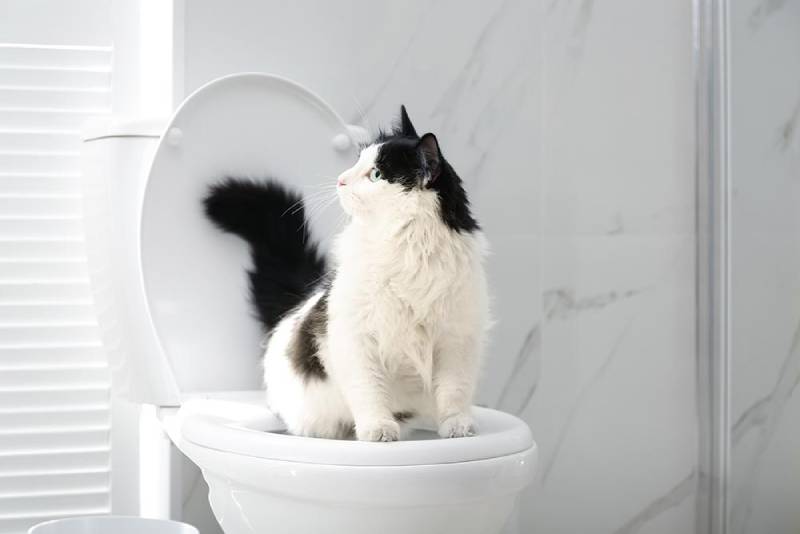Avoid Clogs and Damage: Never Flush Cat Poop Down Your Toilet - Expert Insights
Avoid Clogs and Damage: Never Flush Cat Poop Down Your Toilet - Expert Insights
Blog Article
This great article which follows in relation to Can You Flush Cat Poop Down The Toilet? is indeed enlightening. Don't bypass it.

Introduction
As cat proprietors, it's necessary to be mindful of just how we get rid of our feline pals' waste. While it might seem hassle-free to purge pet cat poop down the commode, this technique can have damaging consequences for both the setting and human health.
Environmental Impact
Flushing pet cat poop introduces damaging virus and bloodsuckers into the water system, posing a substantial danger to aquatic communities. These contaminants can adversely influence marine life and concession water quality.
Wellness Risks
In addition to ecological concerns, purging pet cat waste can also position health risks to people. Feline feces may consist of Toxoplasma gondii, a bloodsucker that can trigger toxoplasmosis-- a potentially severe illness, specifically for expectant females and people with damaged immune systems.
Alternatives to Flushing
Fortunately, there are more secure and much more responsible ways to deal with pet cat poop. Take into consideration the complying with options:
1. Scoop and Dispose in Trash
The most usual method of taking care of feline poop is to scoop it into an eco-friendly bag and throw it in the trash. Make sure to utilize a committed litter scoop and get rid of the waste quickly.
2. Use Biodegradable Litter
Select naturally degradable feline litter made from products such as corn or wheat. These litters are eco-friendly and can be securely dealt with in the garbage.
3. Bury in the Yard
If you have a backyard, consider hiding pet cat waste in a designated location far from vegetable yards and water sources. Be sure to dig deep adequate to prevent contamination of groundwater.
4. Mount a Pet Waste Disposal System
Purchase a pet garbage disposal system especially made for cat waste. These systems use enzymes to break down the waste, reducing odor and ecological impact.
Final thought
Accountable animal ownership prolongs beyond offering food and sanctuary-- it additionally involves appropriate waste monitoring. By refraining from purging pet cat poop down the commode and opting for alternative disposal methods, we can decrease our environmental impact and shield human health.
Why Can’t I Flush Cat Poop?
It Spreads a Parasite
Cats are frequently infected with a parasite called toxoplasma gondii. The parasite causes an infection called toxoplasmosis. It is usually harmless to cats. The parasite only uses cat poop as a host for its eggs. Otherwise, the cat’s immune system usually keeps the infection at low enough levels to maintain its own health. But it does not stop the develop of eggs. These eggs are tiny and surprisingly tough. They may survive for a year before they begin to grow. But that’s the problem.
Our wastewater system is not designed to deal with toxoplasmosis eggs. Instead, most eggs will flush from your toilet into sewers and wastewater management plants. After the sewage is treated for many other harmful things in it, it is typically released into local rivers, lakes, or oceans. Here, the toxoplasmosis eggs can find new hosts, including starfish, crabs, otters, and many other wildlife. For many, this is a significant risk to their health. Toxoplasmosis can also end up infecting water sources that are important for agriculture, which means our deer, pigs, and sheep can get infected too.
Is There Risk to Humans?
There can be a risk to human life from flushing cat poop down the toilet. If you do so, the parasites from your cat’s poop can end up in shellfish, game animals, or livestock. If this meat is then served raw or undercooked, the people who eat it can get sick.
In fact, according to the CDC, 40 million people in the United States are infected with toxoplasma gondii. They get it from exposure to infected seafood, or from some kind of cat poop contamination, like drinking from a stream that is contaminated or touching anything that has come into contact with cat poop. That includes just cleaning a cat litter box.
Most people who get infected with these parasites will not develop any symptoms. However, for pregnant women or for those with compromised immune systems, the parasite can cause severe health problems.
How to Handle Cat Poop
The best way to handle cat poop is actually to clean the box more often. The eggs that the parasite sheds will not become active until one to five days after the cat poops. That means that if you clean daily, you’re much less likely to come into direct contact with infectious eggs.
That said, always dispose of cat poop in the garbage and not down the toilet. Wash your hands before and after you clean the litter box, and bring the bag of poop right outside to your garbage bins.
https://trenchlesssolutionsusa.com/why-cant-i-flush-cat-poop/

Hopefully you enjoyed our piece on Don’t flush cat feces down the toilet. Thank you so much for taking time to read through our piece. Sharing is caring. Who knows, you could be helping someone out. Thanks for going through it.
Book Your Service Report this page